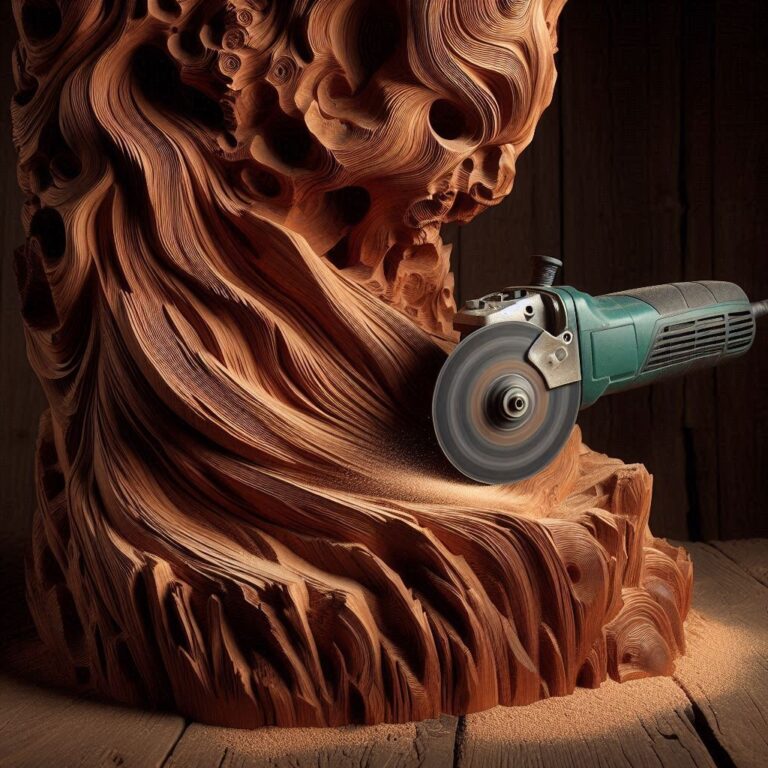Wood Carving Electric Tools: The Ultimate Guide to Precision, Safety, and Mastery
From Hobbyist to Pro: How Modern Electric Tools Revolutionize Woodworking
Introduction
Have you ever marveled at the intricate details of hand-carved furniture or wooden sculptures and wondered, “How do they do that?” The secret lies in wood carving electric tools – the game-changers that blend artistry with technology. Whether you’re a weekend DIYer or a professional woodworker, this guide will show you how to:
- Choose the right tools for your skill level and projects.
- Carve faster and safer with pro-approved techniques.
- Maintain your gear for lifelong durability.
- Create showstopping pieces from decor to furniture.
By the end, you’ll master electric carving tools like a seasoned artisan. Let’s carve into the details!
The Evolution of Wood Carving: From Hand Tools to Electric Power
A Brief History
For centuries, woodworking relied on manual chisels, mallets, and gouges. While these tools produced stunning work, they demanded immense time and physical effort. The Industrial Revolution introduced early power tools, but it wasn’t until the 1980s that electric carving tools became mainstream.
Why Electric Tools Dominate Modern Woodworking
- Speed: Carve 10x faster than manual methods.
- Precision: Laser-guided tools achieve micron-level accuracy.
- Versatility: Switch bits to sculpt, engrave, or sand.
- Accessibility: Affordable models (like Dremel) let beginners create pro-level work.
Essential Electric Tools for Wood Carving
- Rotary Tools: The Detail Master
Best For: Engraving, polishing, and fine linework.
Top Models:
- Dremel 4300 ($150): 175-piece kit with 10 speed settings.
- Foredom SR ($300): Industrial-grade for heavy use.
How to Use:
- Attach a high-speed cutter for floral patterns.
- Switch to a sanding band to smooth edges.
- Use a diamond wheel for glass-like finishes.
Pro Tip: Always start at low speed to avoid wood splintering!
- Power Chisels: The Rough-Shaping Beast
Best For: Removing bulk material, shaping furniture legs.
Top Models:
- Makita CC300DZ ($200): Cordless, 3-speed control.
- DeWalt DWHT20542 ($45): Budget-friendly manual-electric hybrid.
How to Use:
- Flat chisels: Level surfaces.
- V-gouges: Carve grooves for joinery.
- Skew chisels: Create angled cuts.
Safety Note: Wear cut-resistant gloves – these tools bite!
- Angle Grinders: For Bold, Textured Art
Best For: Abstract sculptures, rustic furniture.
Top Attachments:
- Lancelot blade: Tears through thick wood.
- Kutzall disc: Adds organic textures.
Case Study: Artist Sarah Turner uses a Makita XAG11Z angle grinder to craft her award-winning driftwood sculptures.
Choosing the Right Electric Tools: A Buyer’s Checklist
Step 1: Define Your Projects
|
Project Type |
Ideal Tools |
|
Detailed figurines |
Rotary tool + engraving bits |
|
Furniture legs |
Power chisel + angle grinder |
|
Wall art |
Combo of all three |
Step 2: Match Tools to Wood Type
- Softwoods (Pine, Cedar): Any tool under 2 amps.
- Hardwoods (Oak, Walnut): Opt for 5+ amp motors.
Step 3: Budget Breakdown
- 50–50–150: Entry-level rotary tools (WEN 2305, Dremel 3000).
- 150–150–400: Prosumer kits (Milwaukee M12, Bosch GOP12V-28).
- $400+: Industrial models (Fein MultiMaster, DeWalt FlexVolt).

Safety First: Protecting Yourself and Your Workspace
The PPE Non-Negotiables
- Safety Goggles: Stop flying wood chips (3M Virtua CCS rated).
- N95 Mask: Prevent inhaling carcinogenic sawdust.
- Hearing Protection: Use earmuffs for tools over 85 dB.
Workspace Setup
- Lighting: LED shop lights to see details.
- Ventilation: Open windows + air purifier.
- Tool Storage: Pegboards prevent accidental drops.
Horror Story: A Reddit user skipped gloves and needed 12 stitches after a rotary tool slip. Don’t be that person!
Creative Techniques: From Basic to Pro-Level
Technique 1: Texturing with Angle Grinders
- Step 1: Mark design zones with chalk.
- Step 2: Use a Kutzall Extreme disc to carve rough textures.
- Step 3: Blend edges with a flap sander.
Project Idea: Turn a plain oak slab into a “riverbed” coffee table.
Technique 2: Precision Inlay with Rotary Tools
- Step 1: Engrave a 2mm-deep pattern.
- Step 2: Fill grooves with colored epoxy.
- Step 3: Sand to a glossy finish.
Pro Tip: Freeze epoxy overnight for crack-free results.
Maintenance 101: Keep Your Tools Running Smoothly
Daily Care Routine
- Unplug tools and wipe with a dry cloth.
- Inspect cords for frays (replace if damaged).
Lubricate chuck bearings with 3-in-1 oil

Monthly Deep Clean
- Brushed Motors: Replace carbon brushes every 50 hours.
- Battery Packs: Store at 50% charge for longevity.
Tool Lifespan: Well-maintained Dremels last 5–7 years; neglected ones die in 18 months.
Advanced Projects: Push Your Skills
Project 1: Carved Oak Dining Table
- Tools: Power chisel (rough shaping), rotary tool (leg details).
- Wood: Kiln-dried oak for stability.
- Time: 25–30 hours.
Design Tip: Sketch patterns on paper first!
Project 2: Wildlife Sculpture
- Tools: Angle grinder (body shaping), rotary tool (fur texture).
- Wood: Basswood for easy carving.
- Finish: Beeswax + linseed oil for a natural look.
Inspiration: Check out sculptor Thomas Tajo’s YouTube tutorials.
The Future of Electric Carving Tools
AI-Powered Precision
Brands like Shapr3D now offer tools that auto-adjust speed based on wood density.
Eco-Friendly Innovations
- Solar-Powered Tools: Teknomek’s SunCarve reduces grid reliance.
- Biodegradable Batteries: Milwaukee’s MX Fuel cells decompose in 5 years.
Conclusion
Wood carving electric tools aren’t just gadgets – they’re gateways to unlocking your inner artist. Whether you’re crafting heirloom furniture or quirky garden sculptures, the right tools make all the difference. Remember: Safety first, creativity second, and let the chips fall where they may! Now, go carve something amazing. 🪓✨

